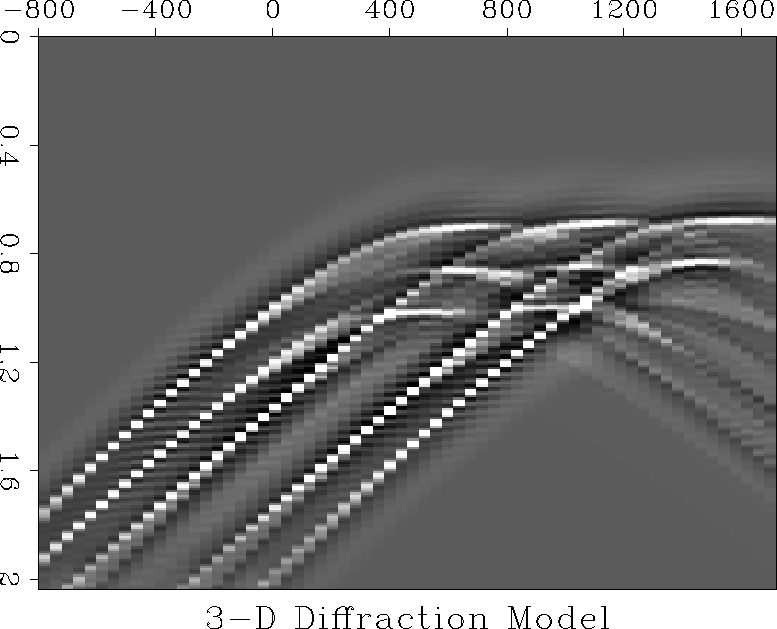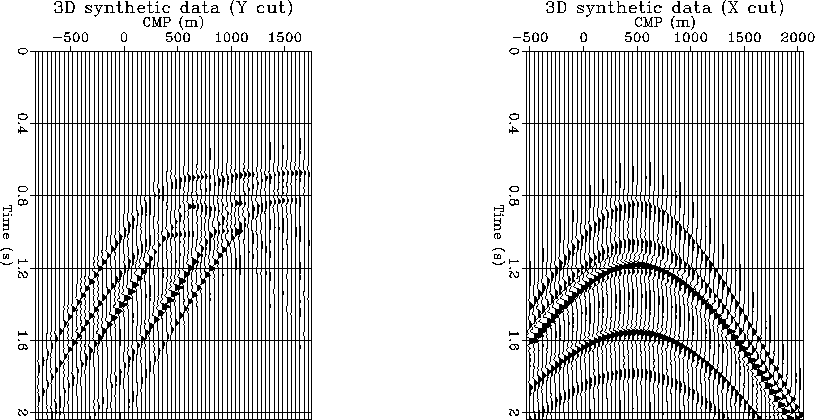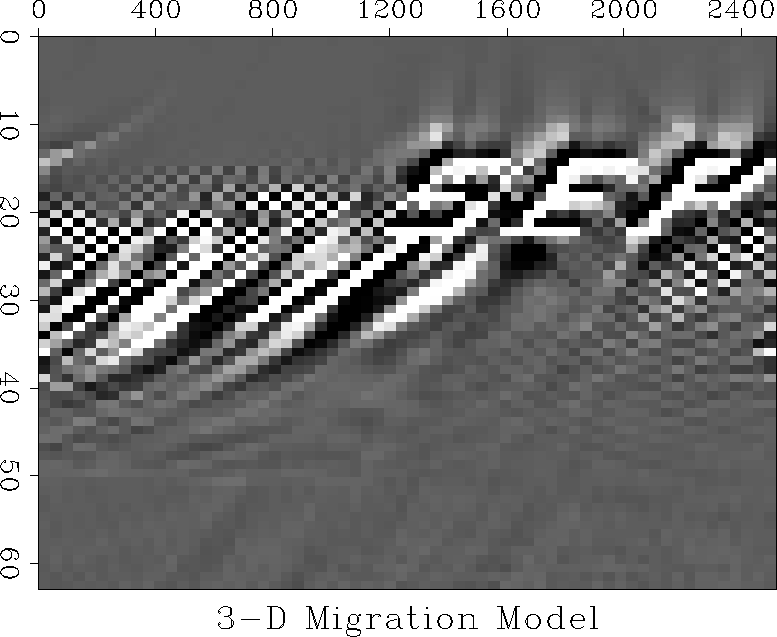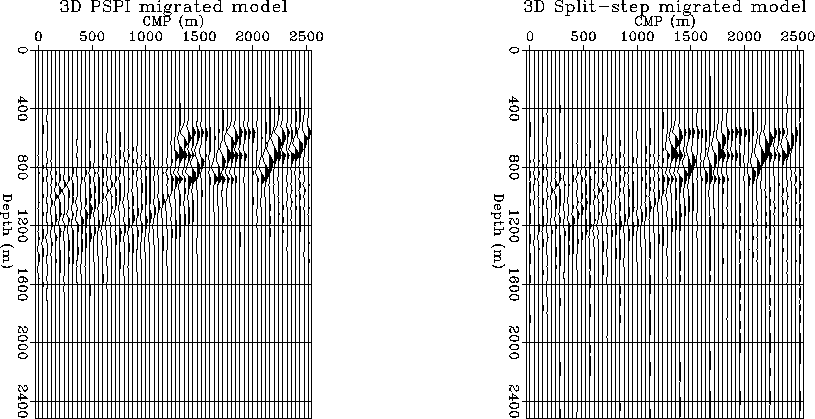




Next: TIMINGS ON THE SEP
Up: IMPLEMENTATION ON THE CONNECTION
Previous: A 2 dimensional example
The three dimensional model is built in a linearly varying velocity
in all three coordinates: v(x,y,z)=v0+ax+by+cz.
The model is composed of three vertical letters, in a plane parallel
with the front of the cube.
The size of the grid (64x64x256) was imposed by the amount of
memory available on the SEP Connection Machine.
Figure 4 displays the 3-D cube of diffraction data while
Figure 5 illustrates two dimensional sections through the
center of the data set.
cube3Dmodel
Figure 4 The three dimensional diffraction cube (64x64x256). Each side
of the cube displays a section through the middle of the
data set.




 model3Dcuts
model3Dcuts
Figure 5 Two cuts through the three dimensional diffraction cube.





The results of the 3-D PSPI migration program are displayed in Figure 6.
I display the data cube such that on each side of the cube is revealed a
section through the center of the data set. On the cube's front side the
section shown is passing through the plane where the diffracting
letters are positioned.
In Figure 7 I show a section through the migrated data passing through
the target plane of the letters.
cube3Dmig
Figure 6 The three dimensional migration cube (64x64x64).




 pspisplit3Dcut
pspisplit3Dcut
Figure 7 3-D migration comparison:
[LEFT] PSPI migrated data. [RIGHT] Split-step migrated data.










Next: TIMINGS ON THE SEP
Up: IMPLEMENTATION ON THE CONNECTION
Previous: A 2 dimensional example
Stanford Exploration Project
12/18/1997




